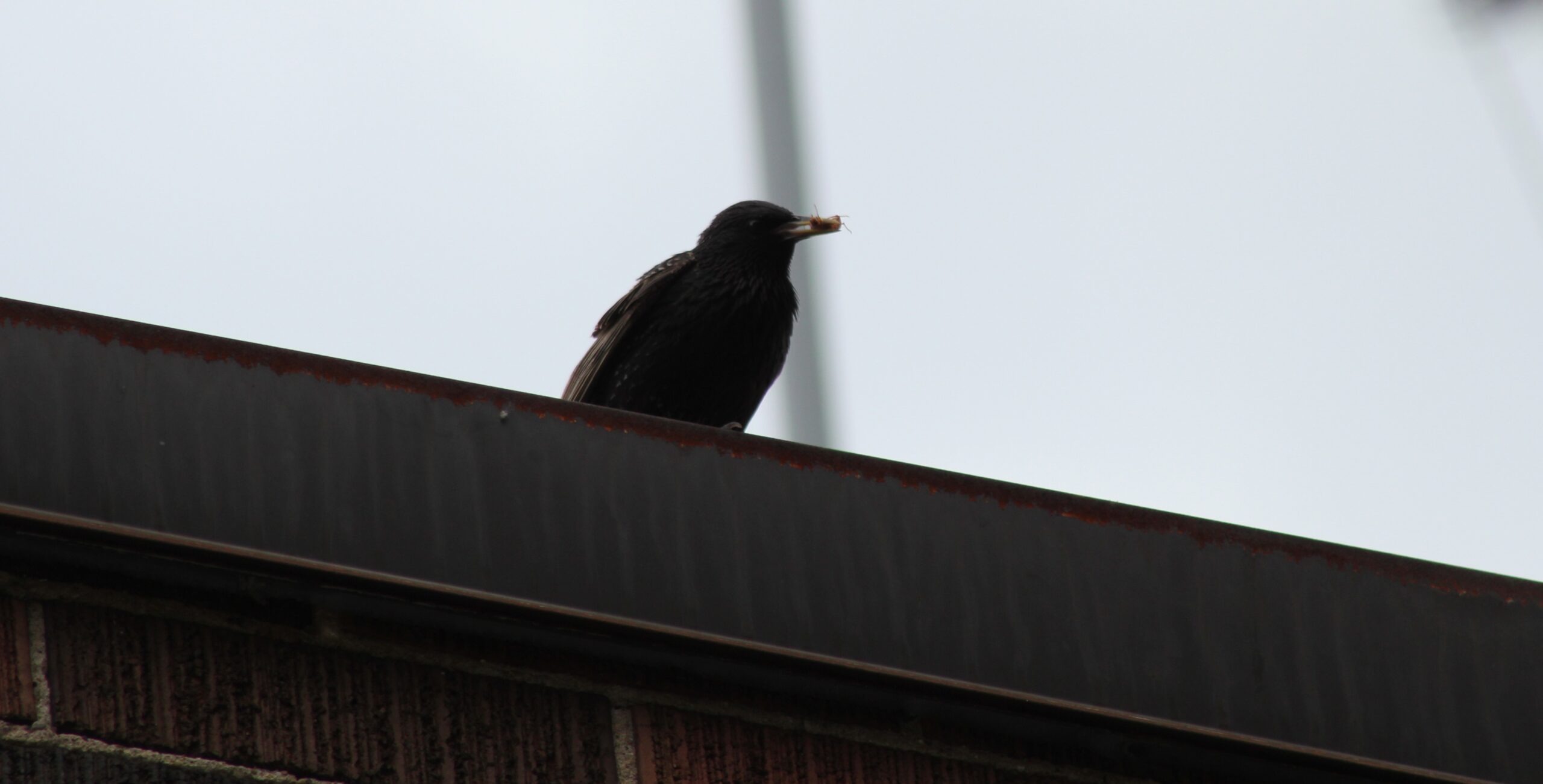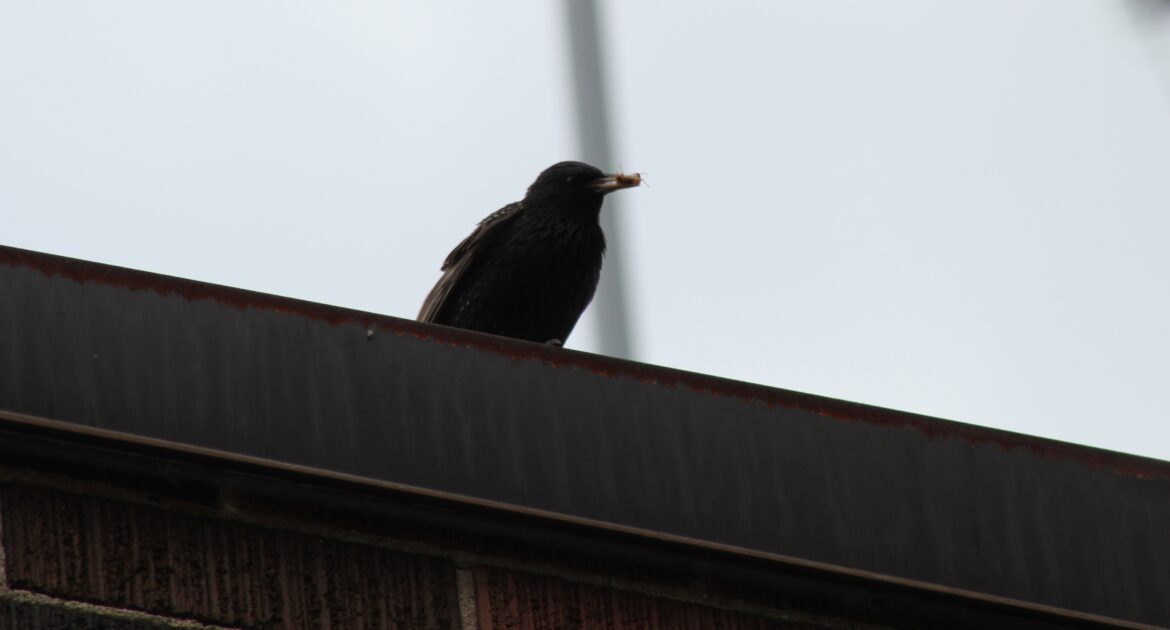Imagine waking up to the melodious chirping of birds, only to realize these sounds are echoing from your own attic. In Hamilton, our charming city with its mix of urban and natural spaces, it’s not uncommon to find unexpected feathered guests seeking refuge in attics, chimneys, or vents. Certain species, seeking warmth and shelter, may become quite comfortable within the nooks and crannies of our homes. But while their songs might be delightful, the damage they can cause is less so. These uninvited tenants can disrupt our routines, damage property, and sometimes even present health risks.
Knowing the typical visitors to Hamilton homes is essential for homeowners. Birds such as starlings, sparrows, and pigeons are the usual suspects when it comes to indoor nesting. Each of these species has adapted well to urban ecosystems and appreciates the cozy shelter an attic or chimney may offer. It’s vital to be informed—not just about what types of birds might be nesting in our homes but also about how their life cycles, like when do birds lay eggs in Ontario, align with our living spaces.
A seemingly harmless hatchling might become a larger issue if not dealt with properly. What to do if you find a baby bird on the ground with no nest? Knowing what to do is crucial. Our team at Skedaddle Humane Wildlife Control in Hamilton is dedicated to helping you understand these dynamics, and we’ll share insights on how best to manage our bird neighbours, protect your home, and maintain harmony in our shared ecosystem.
4 Common Types of Birds Nesting in Homes
When it comes to birds nesting in residential areas, a few species stand out due to their adaptability and preference for urban environments. Starlings, with their sleek plumage and sociable nature, often find attics a perfect spot for raising their young. Sparrows, small yet tenacious, take advantage of small crevices and often enter homes through vents. Meanwhile, pigeons, known for their gregarious nature, prefer roosting in inaccessible, sheltered spaces like chimneys or eaves. These birds are adept at coexisting with humans, making understanding their habits crucial for preventing home intrusions.
- Starlings
European starlings, though mesmerizing in flight, are notorious for their preference for attic, soffit, and wall cavity nests. Their tendency to gather in flocks makes them a significant nuisance for individuals residing in Hamilton homes.
Starlings have a knack for causing structural damage, often seen pulling apart insulation or creating fire hazards near electrical wires. Their nest-building habits necessitate diligent monitoring to prevent costly damage to your property.
- Pigeons
Known for their adaptability to urban life, pigeons are frequent squatters in attics, rooftops, and chimneys. Hamilton’s bustling cityscape provides an ideal environment for these birds to thrive. They seek shelter from predators and unfavourable weather by taking refuge in our homes.
Though seemingly harmless, pigeons can pose health risks due to the accumulation of their droppings, which may lead to respiratory issues. Recognizing their nesting patterns helps in preventing potential health hazards and maintaining a healthy living environment.
- Sparrows
House sparrows are among the most common avian visitors you might find setting up residence in human structures. These small creatures favour snug and enclosed places, often choosing vents, eaves, and gutters for their nesting sites. Their preference for such hidden spaces ensures safety from predators and harsh weather conditions. However, this choice can sometimes lead to blocked ventilation systems for homeowners.
While sparrows’ presence might seem innocuous, their nesting habits can cause damage to home infrastructure, leading to expensive repairs if not addressed. Understanding their nesting behaviour is crucial in managing their presence effectively.
- Swallows
Swallows are known for their distinctive nests built with mud and straw, typically found under eaves or in attic corners. These birds are more prevalent in suburban and rural areas of Hamilton, making them a common sight during warmer months. While they play a beneficial role in controlling insect populations, their nests can result in unsightly messes around properties.
Homeowners should remain vigilant of swallow activity to prevent any structural damage or aesthetic concerns caused by their nests.
Signs of Birds Nesting in Your Home
Identifying the presence of birds nesting in your home is crucial to preventing potential damage and maintaining a safe living environment. While nests may not always be immediately visible, a number of telltale signs can alert homeowners to avian intruders. By recognizing these indicators early on, you can take the necessary steps to address nesting issues and protect your property.
- Noises and Movement: One of the most apparent indicators of avian residents is the sound of fluttering, chirping, or scratching emanating from your attic, walls, or chimney. Such noises suggest that these creatures have made their way into your structure, seeking shelter and safety. Listening for these sounds can help you identify their presence early and take necessary actions to prevent any possible damage to your property.
- Bird Droppings: Spotting droppings near vents, roofs, or chimneys is a strong indication that birds may have nested close by. These droppings can lead to various health issues if left unchecked, emphasizing the importance of timely observation. Regularly inspecting these areas ensures that any potential issues are addressed proactively, keeping your home safe and clean.
- Debris: Finding bits of twigs, leaves, or mud around vents, gutters, or the roofline is another telltale sign of avian activity. These materials serve as the foundation for nests, and their presence indicates recent or ongoing nesting behaviour. Cleaning and inspecting these areas regularly can safeguard your home from potential nesting and minimize associated risks.
Navigating Bird Interactions and Nesting Seasons
In Hamilton, a variety of bird species can find homes within human structures. House sparrows often nest in vents and eaves, pigeons adapt to urban environments by residing in rooftops and attics, and starlings choose attic and wall cavities. Swallows construct their mud and straw nests under eaves, while woodpeckers might target wooden house exteriors for nesting due to insect presence. Meanwhile, chimney swifts opt for chimneys, attaching their twig-built nests to the inner walls. Each bird presents unique challenges and potential damage to the household infrastructure.
At Skedaddle Humane Wildlife Control in Hamilton, we provide professional and humane bird removal services. Our expert team ensures that avian inhabitants are safely evacuated and prevented from re-entering your home, maintaining the integrity of your living space. If you’re dealing with bird nesting issues, we encourage you to contact us for compassionate and effective wildlife control solutions.
Understanding what types of ecosystems do birds live in and when they lay eggs in Ontario is crucial for coexisting peacefully with our feathered neighbours. Should you find a baby bird on the ground with no nest in sight, it is essential to know the appropriate steps to take to ensure its safety. At Skedaddle, our services extend beyond removal to encompass guidance in such situations. Our team is here to assist you with any questions or concerns regarding bird interactions. Feel free to contact us to request a quote or to learn more about our comprehensive offerings tailored to protect both your home and the local wildlife.




